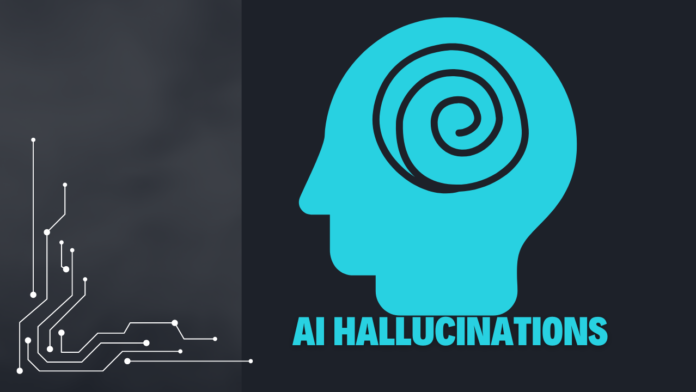What’s the context?
Although researchers claim they cannot be completely removed, AI hallucinations can pose major issues in domains like healthcare and law.
- 68 percent of big businesses utilize AI, despite the hazards.
- “Hallucinations” are erroneous information produced by AI.
- Reducing hallucinations is possible, but not completely.
LONDON-When discussing artificial intelligence (AI), there is one major issue that has to be addressed: occasionally, AI merely fabricates events and presents these so-called hallucinations as truth.
This happens with both commercial solutions, such as ChatGPT from OpenAI, and specialized systems for medical professionals. It may disseminate misinformation and create a real-world hazard in courtrooms, schools, hospitals, and other places.
Despite these dangers, businesses are eager to use AI in their operations; according to British government studies, 68% of big businesses use at least one AI technology.
However, why does AI have hallucinations, and can they be stopped?
What is an AI hallucination?
‘Pattern matching’ is the process by which an algorithm searches the input data for particular shapes, phrases, or other sequences, which might be a job or inquiry. This is how generative AI products like ChatGPT operate. These products are based on large-language models (LLMs).
However, the algorithm is unaware of the words’ meanings. Although it may appear intelligent, what it actually accomplishes may be more akin to taking letters out of a big bag in Scrabble and figuring out what makes the user smile.
Large volumes of data are used to train these AI systems and products, but biased or incomplete data—such as a bag full of Es or a missing letter—can cause hallucinations.
Every AI model experiences hallucinations; the hallucination detection model from Vectara, an AI startup, shows that even the most accurate models identify factual contradictions 2.5% of the time.
Are hallucinations caused by AI dangerous?
The effects of hallucinations can range from ridiculous to serious, depending on where AI is applied.
Google’s Gemini tool began extracting jokes and wrong advice from social media network Reddit after the two parties reached an agreement for Google to utilize the material on the platform to train its AI models. One such joke suggested using glue to adhere cheese to pizza.
Lawyers have frequently utilized AI chatbot-generated fictitious cases in court, and the World Health Organization has issued a warning against the use of AI LLMs in public health because of the possibility of biased or erroneous data being used in decision-making.
“It is even more important for institutions to have safeguards and continuous monitoring in place, including human intervention—in this case, radiologists or medical experts to validate findings—and explainable systems,” Ritika Gunnar, an IBM general manager of product management on data and AI, told Context.
How can one lessen hallucinations?
Enhancing the quality of the training data, having humans check and edit AI output, and maintaining a certain degree of openness about the models’ inner workings can all help lower the likelihood of hallucinations.Effective implementation of these methods might be a challenge, though, as private corporations are reluctant to surrender their unique tools to scrutiny.
In order to label text, photos, video, and audio for use in voice recognition assistants, face recognition, and 3D image recognition for autonomous cars, several major AI businesses rely on low-paid laborers in the Global South.
Lax labor standards make the long hours and demanding job even more stressful.
Additionally, LLMs might be adjusted to lower the likelihood of hallucinations. Retrieval-Augmented Generation is one method for doing this, which uses outside sources to augment AI’s responses.
According to AI startup Service Now, this may be useful, but because of the infrastructure needed—cloud computing space, data collection, human management, and other things—it might be quite expensive.
AI might also utilize smaller language models in place of LLMs; these models could be trained on comprehensive, defined data, so they would be less likely to create hallucinations than 3,000 replies.
Additionally, utilizing these smaller models might lessen AI’s significant environmental impact.
Experts at Singapore’s National University, however, think that hallucinations will never totally disappear.
The researchers noted in a report released in January that “because of the nature of how models generate content, it’s challenging to eliminate AI hallucinations entirely.”
“An important, but not the only, reason for hallucination is that the problem is beyond LLMs’ computation capabilities,” they stated.
“Any response other than ‘I don’t know’ for certain situations is untrustworthy and implies that LLMs have implicitly inserted premises throughout the creation process. It could strengthen stereotypes and biases against underrepresented groups and ideologies.”


